KAIM Chairman Cho, Sok-hwan develops Inter-Korean Hangeul keyboard jointlyPositioned to achieve “real national unification” By Lee Kyung-sik
“There is only one person in the Republic of Korea who is able to achieve real national reunification of the Korean peninsula.” A friend of mine told me so recently. It certainly was like a bolt from the blue. “Who could be that person?” I wanted to know. North Korea's Kim Jong-un shows the cold shoulder to the Moon Jae-in regime which has pursued an appeasement policy. The North Korean regime also turned down all appeasement gestures so far made by President Donald Trump of the United States. Still, the friend said that there is someone who is positioned to materialize national unification “peacefully’ and at the initiative of the Republic of Korea. The person in point is Chairman Cho, Sok-hwan of the Korea Association of Information Management (KAIM), who has pushed for the standardization of Hangeul keyboards for decades. The Korea Post recently interviewed Chairman Cho to hear about his passion on the Hangeul keyboard project which may also contribute to the realization of the divided Koreas. Excerpts from the interview with Chairman Cho follow: 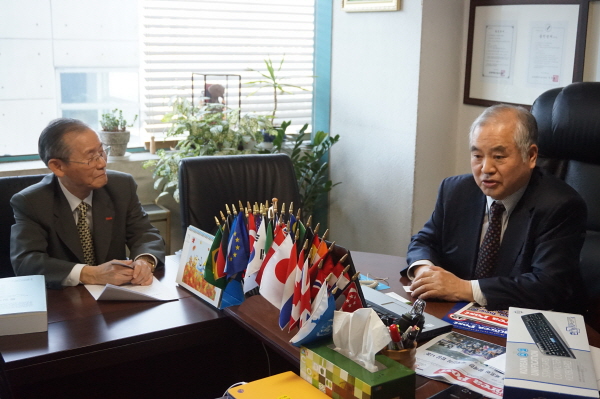
Chairman Cho, Sok-hwan of the Korea Association of Information Management Association (right) is interviewed by Publisher Lee Kyung-sik of The Korea Post media. Question: Could you review the history of Hangeul computer keyboards in Korea? Answer: Our keyboard standardization undertaking dates back to half a century ago. Tens of millions of computer users worldwide have been able to gain access to the Korean standard keyboard system (KS C 5715) since it was designated as a global standard by the South Korean government in 1982. Despite the government-level exchanges between South Korea and North Korea had remained frozen, Cho, Sok-hwan, chairman of the Korea Association of Information Management, signed an agreement on academic exchanges with North Korea with regard to a unified keyboard project in preparation of national unification. South and North Korea jointly developed the “Hangyeore Unified Keyboard Layout of Digital Telecommunication Devices.” We registered pertinent trademark & technology patents in the South. 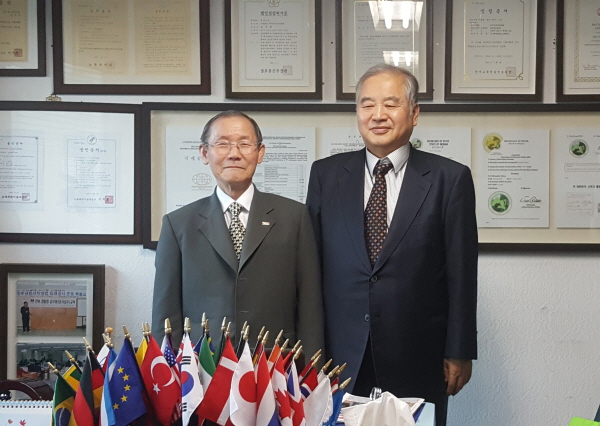
Chairman Cho (right) and Publisher Lee with many citations won by the former. South and North Korea have developed various methods on speaking, letters, and printing. However, different names like “Hangeul” and “Joseon characters” have been adopted on telecom devices, such as telephones, televisions, FAX, computers, and smartphones, primarily due to the advancement of digital information technology. Despite the same Hangeul and Joseon characters on their keyboards, South and North Korea have used different grammars as well as the different order of consonants and vowels for nearly 70 years. The keyboard of digital communication devices should be easy to learn and use. This is embodied in the Humin Jeongeum’s philosophy. Q: What motivated you to be a keyboard specialist? A: After becoming a member of KATUSA (the Republic of Korea Army Augmented to the Eighth United States Army) in the 1960s, I first accessed the IBM computer and the digital keyboard. Even after leaving the army, I remained interested in the computer and went to the United States for advanced study. I worked hard to install the Hangeul alphabet on the computer keyboard. Eventually, l became a national computer keyboard specialist, while working hard to unify the computer keyboard layouts of South and North Korea. 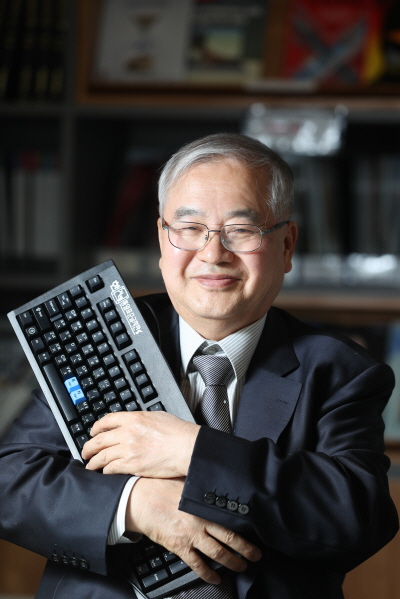
Chairman Cho, Sok-hwan of KAIM display the keyboard he has developed. Of note, Kong Byung-woo (1906-1995), who developed the “triple-set” typewriter, had a great impact on me. He once invited me to his office and called for me to spearhead the development of triple-set typewriter. Unlike the Hangeul typewriter used by Koreans today, which features a “double-set” keyboard layout, Kong’s typewriter exhibited a “triple-set” layout containing the end consonants in addition to the first consonants and vowels. He earnestly asked for me to commit to the job of developing a unified keyboard standard amid high tensions in the Korean Peninsula. In 1969, the Korean government adopted a double-set keyboard layout after many twists and turns. Since then, the double-style computer keyboard has become a global norm. The National Computer Keyboard Commission was created around that time.

Unified Hangeul Keyboard of Hangyeore jointly developed by Cho Dong-mun with North Korean experts. There were several reasons for the adoption of the double-set keyboard layout. In the 1980s, one big problem related to poor printing ability of the triple-set keyboard system. At that time, the printing quality of the triple-set keyboard was very poor. However, now that the printer's performance has significantly improved, printing on triple-set keyboard layout poses few problems. But it will be impossible for large numbers of people to shift to the double-set keyboard system all of sudden. Like in the United States, both double-set and triple-set keyboards can be put to use. Today, the QWERTY keyboard is widely accessed in the United States, but the Dvorak simplified keyboard is also recognized as a standard keyboard.
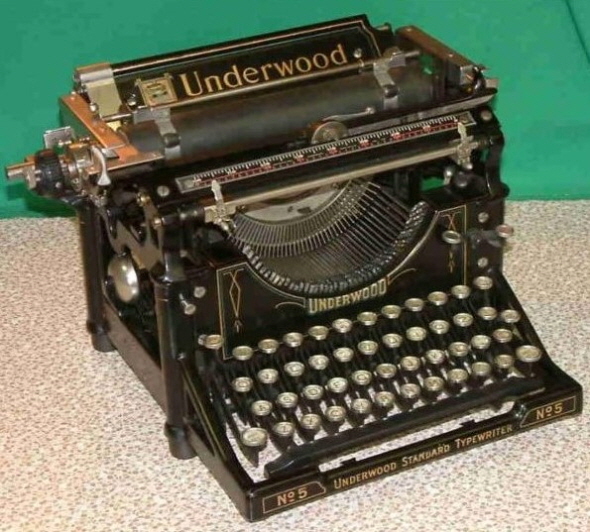
An Underwood typewriter donated to Chosun Christian College by Dr. John T. Underwood. Q: Could you explain about the unified South-North Korean computer keyboard? A: In the early 2000s, industrial standardization of the two Koreas was a key issue. The industrial standardization of both Koreas was hard to achieve due to the prolonged division of the peninsula. Thanks to our concerted efforts to reach an agreement with North Korea, however, we came up with the finished product which obtained technology patents in South Korea. It was named “Unified Hangyeore Keyboard.” While we were able to register the technology patent at an earlier time, the patent registration of the word, “Hangyeore” took more time. Eventually, we won a crucial lawsuit, which enabled us to use the word legally. Although South Korea gains greater access to the operating system (OS) of Microsoft (MS), North Korea adopts Linux like Europe. This is the reason that the unified keyboard was developed by installing both MS and Linux. In response to the market trend, the Google Play Store installed the “Hangyeore Unified Standard Keyboard” app a year ago.
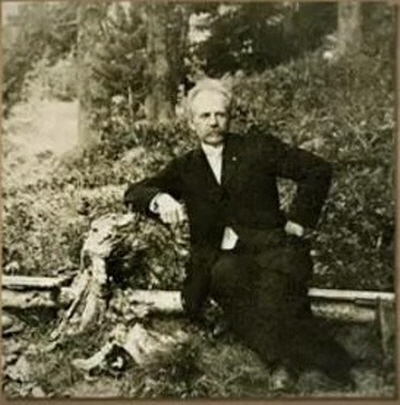
American Christian Missionary Mr. Underwood who developed the first Hangeul script (horizontal writing
|  지식정보화의 Vision
지식정보화의 Vision  지식정보화의 Vision
지식정보화의 Vision